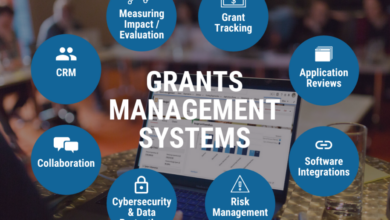Big Data Applications

Big data is a technological concept that is used to structure and process large amounts of data (over 150 GB per day, but much more often these volumes are calculated in petabytes) from multiple sources in real time. This approach reveals hidden patterns that elude the perception of the human brain, and provides opportunities for optimizing many areas of our lives. In particular, with the help of analytical solutions, automation solutions, solutions based on artificial intelligence, etc.
Indeed, today the digital market is full of applications and gadgets based on this technological concept. We will discuss these solutions in detail below.
Big Data App: The Principles of Its Work
Here’s how the big data process works within an average big data app:
- the system receives the task;
- the system collects the necessary information, at the same time preparing it: deletes irrelevant information, clears garbage, decodes;
- the system selects a suitable model or algorithm for analysis;
- the system learns the algorithm and analyzes the found patterns.
Now let’s see why big data can be used in practice.
How Does It Work in Practice?
The principle of big data technologies is based on comprehensive informing of a specific user about any subject or phenomenon. The purpose of this data presentation is to help evaluate all the pros and cons in order to make the right decision. Some intelligent solutions based on processing colossal amounts of data are able to independently build optimal scenarios and strategies for the future, simulating various options and tracking their results.
For example, if we talk about commercial prospects for implementing big data in applications, they are as follows:
- development of projects that are most likely to be in demand among users and buyers;
- study and analysis of customer requirements for existing services or products of the company for their subsequent optimization;
- identification of loyalty and dissatisfaction of the customer base by analyzing information from blogs, reviews, social networks and other sources;
- attracting and retaining the target audience through constant analytical work with large amounts of information.
In particular, big data-based applications provide a qualitatively new level of user experience personalization.
Big data is used by both large companies – IBM, Google, Facebook and financial corporations – VISA, Master Card (for example, to prevent fraudulent transactions with customer accounts), and local companies to analyze user behavior within an application or web service.
Top-5 Tech Concepts to Be Used with Big Data
Big data can be used in conjunction with such solutions:
- cloud storage. Technologies for storing and working with data in the online space allows to solve small and medium-sized businesses a lot of problems associated with the costs and organization of remote work;
- artificial intelligence and machine learning. Analytical machines replicate how the human brain works to form artificial neural networks. In turn, learning takes place on the basis of large data amounts;
- dark data. These data do not play a significant role in the development of the business, but are used for its proper functioning at the technical and legislative levels;
- blockchain. In this case, big data makes online transactions easier;
- self-service solutions. Such platforms allow users to independently store and organize data.
However, big data can work for more than just the business. The technology is being actively implemented, for example, in healthcare. Today, big data analysis can predict the outcome of complex surgeries, collect anamnesis and diagnose rare diseases.
What Factors Prevent The Implementation Of Big Data Solutions?
If at the beginning of the 2000s, big data was mainly used by global corporations, today these technologies are rapidly being introduced into the sphere of small and medium-sized businesses. But, together with the promising prospects for big data, some factors hinder the implementation of this concept.
For small and medium-sized companies, this is a long and expensive process of collecting data. However, there is an alternative solution here: many services provide APIs for accessing their data. Most likely, they will not give you the access to 100% of the available and incoming data, but this is a cost-effective option for companies with a limited budget. The next thing you have to remember is that some information is completely personal – collecting it without the consent of its owner is prohibited.
That’s why you have to decide on how to store your data securely. For example, you can carefully study the ISO 27001 standard and its equivalents to understand what measures you need to take. You will probably also need to restrict some of your employees to the level necessary to perform their work duties, exclude the possibility of copying data from storage, as well as integrate data anonymization tools.
Data volumes grow rapidly, and in order to process them, distributed storage and programs are used. With this approach, as the number of data increases, you can simply add new nodes, rather than rewrite the current solution from scratch. Therefore, initially, when creating an application based on this concept, it is important to hire a team that already has a lot of experience working with big data and is able to create a flexible, scalable architecture. Also, you have to provide a high speed of data processing and integrate some special mechanisms to cope with the lack of their structuredness.
As you can see, special conditions are required for storing large amounts of data, and fundamentally new methods of analysis are needed to ensure high processing speed. At the same time, you need to understand that big data is often scattered and sometimes unreliable, and this interferes with effectively solving business problems.
Summary
Above, we analyzed the most popular areas for using big data and studied the basic principles of this concept. In particular, today big data actively develops, recognizing fraud in banks, calculating the effectiveness of advertising campaigns, making recommendations for films, and even diagnosing patients. The largest market segments are manufacturing, finance, healthcare, environmental protection, and retail.
If you would like to also integrate big data into your business processes, just contact this big data applications development team.





